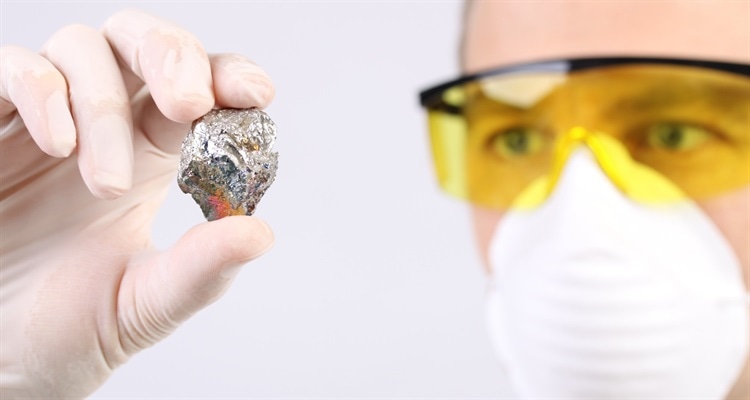Shaping the Future of Thermal Control: Shape Memory Alloys in Next-Generation Heating and Cooling Systems

Nearly 50% of global energy consumption goes toward heating and cooling buildings. As the climate crisis escalates and energy costs rise, the quest for energy-efficient thermal regulation has never been more urgent. One promising solution lies in the evolving world of shape memory alloys (SMAs)—smart metals capable of responding to temperature changes with remarkable precision.
A recent study featured in Acta Materialia and highlighted by AZoM explores how fine-tuning the thermal expansion behavior of SMAs can unlock new possibilities for solid-state heating and cooling. Using advanced modeling and experimental deformation techniques, researchers are now able to engineer alloys that not only expand and contract predictably with temperature—but do so with near-zero or even negative coefficients of thermal expansion (CTEs).
🧊 Understanding Thermal Expansion in SMAs
The researchers applied Landau’s theory of first-order phase transitions to develop thermodynamic models that accurately predict how SMA lattice structures expand with temperature. This allowed them to construct a powerful theoretical tool—a combined CTE tensor and orientation distribution function—to map out the deformation pathways needed to fine-tune material behavior.
Experiments on 17 polycrystalline NiTi-based alloys showed that this deformation-driven approach could transform a material’s CTE from positive to zero, and even to negative values. This kind of control is essential for designing smart thermal actuators and building materials that maintain dimensional stability across wide temperature ranges.
🔥 A Ferroelastic Breakthrough: Ti-Nb Alloys for Solid-State Heat Pumps
Researchers have also identified new SMA compositions that offer extraordinary potential for solid-state heating systems. In one experiment, Ti78Nb22 martensitic alloys were engineered with a special [100] crystallographic texture using cold rolling and compression techniques. These materials exhibited a strong thermoelastic effect—generating an adiabatic temperature change (ΔTad) of over 5 K under compressive stress at elevated temperatures.
Even more impressive was the system’s coefficient of performance (COP) of 25.3 at moderate temperatures (~280 K), translating to a second law efficiency of 88–95%. Such metrics significantly surpass traditional vapor compression heat pumps, offering a greener, more efficient alternative for industrial and residential heating applications.
🧲 The Inverse Magnetocaloric Effect for Cooling
SMAs also shine in the realm of solid-state cooling, especially when designed to exhibit a giant reverse magnetocaloric effect (MCE). When transitioning from martensite to austenite under a magnetic field, these materials release heat and achieve cooling in a way that reverses the conventional MCE mechanism.
By leveraging phase transformations and fine-tuning magnetic order, these alloys can become viable components in magnetic refrigeration systems that are quieter, smaller, and more sustainable than traditional units.
⚙️ Overcoming the Limitations of Classical Thermoelastic Models
While promising, integrating SMAs into thermal systems isn't without hurdles. Classical linear thermoelasticity models often fall short when applied to large deformations or temperature gradients typical in real-world use. To tackle this, scientists are developing new theoretical frameworks and high-precision load cells that can deliver the precise forces required without degrading the material or compromising efficiency.
Furthermore, fabricating multiferroic alloys—which combine magnetic, electric, and structural responsiveness—remains a challenge due to cost, complexity, and mechanical fragility. Ongoing work in heat treatments, alloy design, and system integration aims to address these barriers and push SMAs from the lab to large-scale application.
🌍 A Path Forward for Smart Thermal Technologies
The implications of this research extend far beyond metallurgy. From revolutionizing energy-efficient climate control systems to enabling precision thermal management in aerospace, automotive, and wearable electronics, shape memory alloys offer a powerful, adaptable platform for thermal innovation.
By exploiting their unique phase-change characteristics, researchers are bringing us closer to eco-friendly heating and cooling solutions that operate silently, efficiently, and sustainably—without the need for traditional refrigerants or fossil fuels.
Read the original article on AZoM here: https://www.azom.com/article.aspx?ArticleID=24611
Sponsored by PWmat (Lonxun Quantum) – a leading developer of GPU-accelerated materials simulation software for cutting-edge quantum, energy, and semiconductor research. Learn more about our solutions at: https://www.pwmat.com/en
📘 Download our latest company brochure to explore our software features, capabilities, and success stories: PWmat PDF Brochure
📞 Phone: +86 400-618-6006
📧 Email: support@pwmat.com
#ShapeMemoryAlloys #SolidStateCooling #ThermalExpansion #SmartMaterials #EnergyEfficiency #MagnetocaloricEffect #ThermoelasticAlloys #MaterialsScience #QuantumServerNetworks #PWmat

Comments
Post a Comment